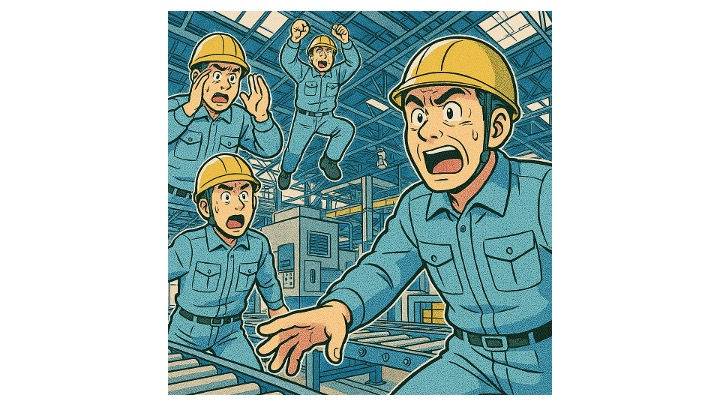Kaikaku
- hidet77
- Jun 23
- 3 min read

Kaizen and Kaikaku are entirely different.
In my post about “Kaizen capability,” I got some responses that “Small improvements are Kaizen, Large improvements are Kaikaku.”
I understand. Some Japanese consultants promote that view. It might be more profitable for them, but I disagree with it and do not support it. They claim that “Kaizen is based on affirmation of the current situation, Kaikaku is not.” 😂 These consultants should share such foolish opinions with Toyota on the factory floor, and they would be dismissed. Kaizen is NOT about affirming the current situation. Current conditions are always subject to improvement by challenging the status quo.
So, what is Kaikaku【改革】? In short, it is reform.
The first symbol is the Kai 【改】, which is the same as Kaizen.
The second symbol, Kaku 【革】, means leather. From this original meaning, the symbol begins to take on another meaning—one of change. Why this is not clear. I suppose that molting was perceived as a symbol of regeneration; therefore, it began to carry such meaning.
In Japanese history, we study the “Three Biggest Reforms of the Edo Era (1603-1868)”: the Kyoho, the Kansei, and the Tenpo. However, there is some debate about this topic. “The three biggest” refers to the fact that many other reforms also happened in the central government, some of which may have had a larger impact. About three hundred local governments existed, and many of them experienced Kaikaku. Historians agree that there is no clear definition of what counts as a “Kaikaku.” The only thing we know is that “for some reform, we called it Kaikaku.” The truth about the “three biggest reforms” is that the Tenpo reform started with a promotion: “We are going to do the same as Kyoho and Kansei. We are going to call these the three biggest reforms.” And, because of this campaign, we continue to learn about it in this group.
The word “Kaizen” did not exist during the Edo era. Kaizen was developed during the Meiji era (1868-1912). This marked the beginning of Japan's modernization. We experienced numerous reforms, both big and small, during that period. Some were beneficial, others were not. Good reforms were called Kaizen, while the harmful ones were called Kaiaku. In TPS, if a change is a Kaiaku, we need to Kuhu more to become a Kaizen.
Now let’s highlight the key differences between Kaizen and Kaikaku.
🔹 Results
In Kaizen, the results are essential. We need to review the results after implementing Kaizen. If the results are not satisfactory or do not meet expectations, we must take further action.
The results of Kaikaku are not very significant. The current Japanese government has been talking about “administration reforms” for decades. But where are the results? And when they fail, they rebrand the name. Also, what were the results of the three biggest reforms of the Edo Era? Shogun Yosimune Tokugawa started the first one. His nickname back then was not “The Unfettered Shogun.” (That was a popular TV show.) Instead, his nickname was “Rice Shogun,” because he tried to control rice prices and suffered. The other two reforms ended in six and two years, respectively, because the leading reformers were forced to resign. None of them were successful.
🔹 Current condition and the Intent
One reason I mentioned earlier is that Japanese consultants use Kaikaku to challenge the status quo, which is vital for driving change. However, there is a dangerous viewpoint that involves ignoring current conditions.
As I mentioned earlier, all three major reforms of Edo largely failed. Why? The Edo era was the first time in centuries of peace. During wartime, securing land and food was the primary focus; therefore, the Samurai government was designed around land ownership and income from it. With peace, the economy shifted from agriculture to crafts and commerce. During this transition, these reforms were introduced. Their slogans? “Let’s go back to the old way!” They tried to revert to policies focused on agriculture. Is the government's income shrinking and unstable? Cut spending. Are there more cultural events? Cut them all. Punish and control commerce. Why did the reforms fail? Because they targeted the wrong goal. Confucianism influenced this goal. Confucianism has many advantages and disadvantages. I often use it to explain things, but we must admit it has many flaws. One of these is that they ignore reality and push their agenda.
And, how many “improvement projects” have new slogans with wrong thinking?
This idea, “Kaikaku means big change, Kaizen means small,” started with silly Japanese consultants. The difference isn't about the size of the change. They are focused on entirely different things. What we need to watch out for are the results and our responsibility to current conditions.
And, please don’t mess with words.



Comments